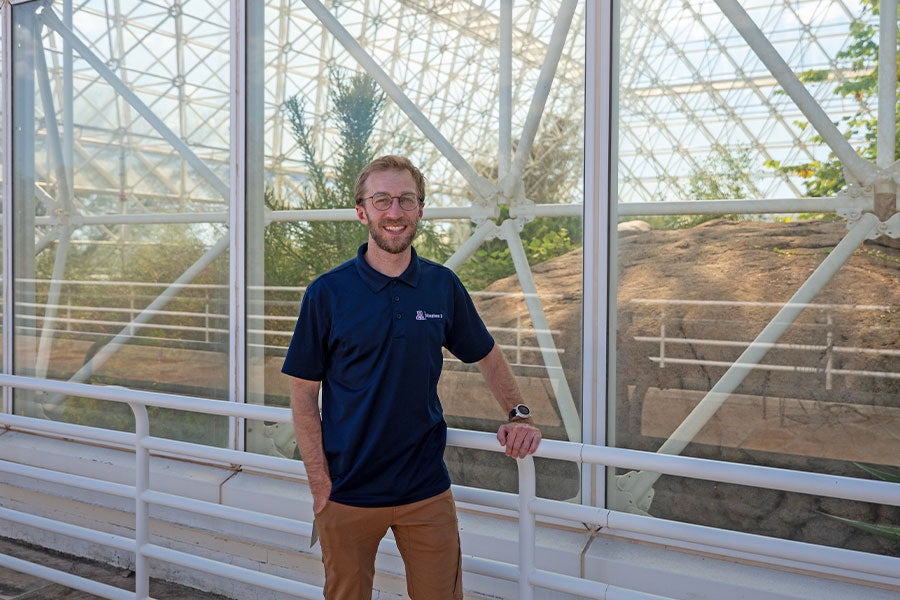Science under Glass
Matthew (Peterson) Rusek-Peterson ’17 fell in love with geology during rock-hunting trips with his dad, a high school science teacher. But attending Luther as a biology and environmental studies major, he says, turned him on to a new scientific interest: “When I took botany, I learned about mutualistic relationships between different plants and how they share resources through what’s called a mycorrhizal fungal network. That just grabbed me, that interchange between biology—the aboveground plants and animals—and geology, which is that deep time. It made me aware of the convergence of plants, soil, and microbes. That drove me through to where I am today.”

After working at Pacific Northwest National Labs in Washington, Matthew earned an MS at Texas A&M, focusing on soil microbial communities. He then joined his now-wife, Carly (Rusek) Rusek-Peterson ’16, when she found an occupational therapist position in Tucson, Arizona. That’s when he encountered Biosphere 2.
Biosphere 2 is a world-renowned research facility featuring a diverse array of complex, interconnected biomes and active experimental systems. Originally launched in the 1980s as an ambitious closed-system experiment, the 3.14-acre sealed glass enclosure contains multiple distinct biomes—including a 700,000-gallon ocean with a coral reef, tropical rainforest, mangrove wetlands, savannah grassland, fog desert, and more. It gained international attention in 1991 when eight people were sealed inside for two years to test the viability of sustained life in a closed environment. Today, Biosphere 2 is owned and operated by the University of Arizona, which conducts cutting-edge research on climate change, ecosystems, and sustainability within this unique facility.
As the analytical lab coordinator for Biosphere 2, Matthew supports this research by managing storage, preparation, and processing of samples; collecting data and readying it for publication; maintaining and troubleshooting instruments; and teaching undergraduate students analytical methods. Basically, he says, “I have to figure out how to mitigate issues while actively moving research forward.”
Biosphere 2 is such a valuable place to research, Matthew says, because “unlike in the natural world, scientists at Biosphere 2 can precisely control and isolate environmental variables, allowing them to study interactions that are otherwise impossible to separate in nature.” For instance, by injecting various concentrations of CO2 into its rainforest, scientists can quickly and clearly observe how plants respond to various stressors such as increased temperatures and flooding. In the Landscape Evolution Observatory, they simulate rainfall on hillslopes to better understand and model how chemical weathering and soil development occur on a primary substance like basalt. In the early 2000s, researchers conducted some of the world’s first studies on the impacts of elevated ocean CO2 on coral growth, and now they’re working to reintroduce coral on the degraded reef. Future coral research will investigate radical interventions for coral resilience and reef restoration.
Matthew says, “Biosphere 2 is a fantastic place for collaborative efforts to observe, model, and rapidly collect data at the confluence of biogeochemical responses across a variety of environments.”